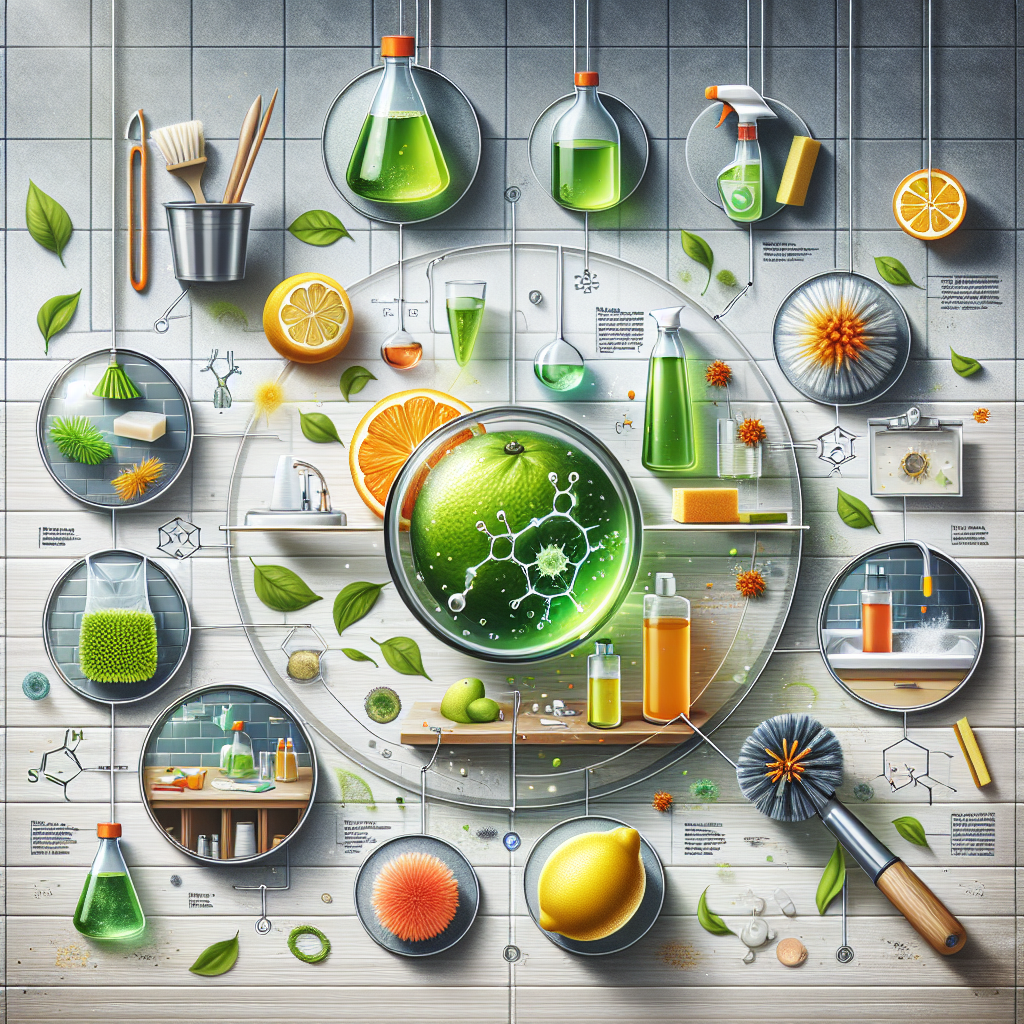In our fast-paced world, keeping our homes clean is essential for our health and well-being. However, the cleaning products we use can sometimes do more harm than good. This has led to a growing interest in green cleaning, which utilizes natural products to combat dirt and germs effectively. In this article, we will explore the science behind green cleaning, how natural products work, and why they are becoming the preferred choice for many households.
What is Green Cleaning?
Green cleaning refers to the practice of using environmentally friendly cleaning products and methods that are effective yet safe for both humans and the planet. Unlike conventional cleaning products, which often contain harsh chemicals, green cleaning focuses on using biodegradable ingredients derived from natural sources. This approach not only reduces pollution and waste but also promotes a healthier indoor environment.
The Ingredients That Make Green Cleaning Effective
Vinegar: Nature’s Antimicrobial Agent
Vinegar is an age-old cleaning staple that is celebrated for its antimicrobial properties. Acetic acid, the primary component of vinegar, can inhibit the growth of bacteria and prevent mold. When diluted with water, vinegar can effectively clean glass, countertops, and other surfaces, leaving them streak-free and sanitized.
Baking Soda: The Gentle Abrasive
Baking soda, or sodium bicarbonate, is another powerhouse in the green cleaning arsenal. Its mild abrasive qualities make it perfect for scrubbing without scratching surfaces. Moreover, baking soda can neutralize odors and even help eliminate stubborn stains. A combination of baking soda and vinegar creates a fizzing reaction, making it an excellent drain cleaner when combined with hot water.
Lemon Juice: A Natural Disinfectant
Lemon juice is not only a popular ingredient in cooking; it also doubles as a powerful cleaner. The citric acid in lemon is a natural disinfectant that can cut through grease, remove stains, and brighten surfaces. Its pleasant scent also helps combat odors, leaving your home smelling fresh and clean.
Essential Oils: Aromatic Powerhouses
Essential oils, derived from plants, are often used in green cleaning products for their antimicrobial properties and delightful fragrances. For example, tea tree oil is known for its antifungal and antibacterial benefits, while lavender and eucalyptus oil can enhance mood and promote relaxation.
How Green Cleaning Products Work
The Science of Surfactants
Surfactants play a crucial role in how cleaning products break down dirt and grime. Green cleaning products typically use plant-based surfactants, which lower the surface tension of water, allowing it to spread and penetrate more easily into soiled surfaces. This means that natural ingredients can be just as effective at lifting dirt and grime as their chemical counterparts.
pH Balance and Cleaning Effectiveness
Many green cleaning products harness the power of pH levels to enhance their effectiveness. For instance, alkaline-based cleaning products can break down organic materials, while acidic cleaners can dissolve mineral deposits. By using a combination of pH-balanced ingredients, green cleaners can tackle a wide range of cleaning challenges.
Benefits of Green Cleaning for Your Home and Family
Healthier Indoor Air Quality
Traditional cleaning products can release volatile organic compounds (VOCs) into the air, contributing to indoor air pollution and potential health issues. Green cleaning products, on the other hand, have significantly lower VOC levels, promoting healthier indoor air quality. This is particularly important for families with children, pets, or individuals with allergies and sensitivities.
Environmentally Friendly
Choosing green cleaning products means you are actively contributing to a healthier planet. Many natural ingredients are biodegradable and non-toxic, making them less harmful to the environment compared to conventional cleaners. By reducing chemical runoff and pollution, you are helping preserve the world for future generations.
Cost-Effective Cleaning Solutions
Many natural cleaning solutions can be made from inexpensive pantry staples. For example, vinegar, baking soda, and lemon juice are all budget-friendly ingredients that can replace multiple commercial cleaning products. By creating your own green cleaners, you can save money while also minimizing waste.
Making the Transition to Green Cleaning
Start Simple
If you’re new to green cleaning, start by replacing your favorite household cleaners with natural alternatives one at a time. For instance, trade your all-purpose cleaner for a vinegar and water solution, or substitute your chemical-laden bathroom cleaner with a baking soda paste.
Educate Yourself
Learn about the various natural ingredients and their specific cleaning properties. Understanding how different elements interact can help you create DIY cleaning solutions tailored to your needs.
Read Labels Carefully
When purchasing commercial green cleaning products, look for certifications or labels indicating that they are eco-friendly. Be mindful of packaging that claims to be “green” without substantial evidence, as some products can still contain harmful chemicals.
Conclusion: Embrace the Power of Green Cleaning
Green cleaning is more than just a trend; it’s a way to create a healthier and safer home environment. By understanding the science behind natural products and their incredible cleaning capabilities, you can fight dirt and germs effectively while reducing your environmental footprint. Embrace the power of green cleaning and take the first steps towards a cleaner, healthier home for you and your loved ones.


